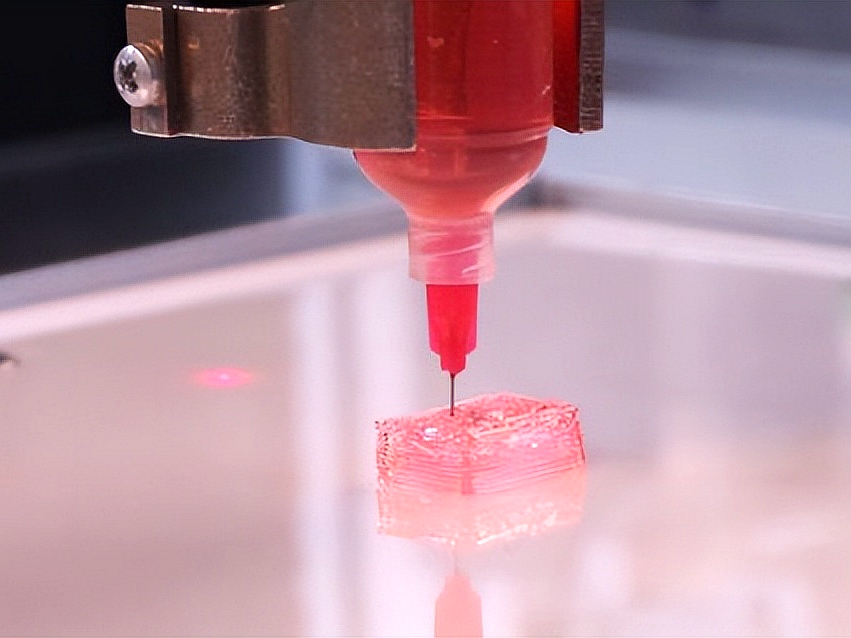Understanding Ultrasonic Additive Manufacturing (UAM) 3D Printing
Introduction
Ultrasonic Additive Manufacturing (UAM) is a sophisticated metal additive manufacturing technology that uniquely employs ultrasonic vibrations to bond thin metal foils layer-by-layer, producing fully dense, metallurgically robust parts. Distinguished from traditional CNC machining or laser-based additive processes, UAM allows embedding of sensors and fibers, creating multifunctional structures with unmatched complexity. It's particularly advantageous for aerospace, automotive, and electronics industries requiring precise, lightweight, and high-performance components.
At Neway, our advanced industrial 3D printing services utilize UAM technology, enabling rapid production of integrated, multi-material components and embedded-sensor prototypes, significantly streamlining design validation and reducing time-to-market.
How UAM Works: Process Principles
Ultrasonic Additive Manufacturing involves three fundamental stages: ultrasonic bonding, foil layering, and precise machining. First, thin metallic foils are precisely layered on a substrate. High-frequency ultrasonic vibrations (typically ~20 kHz) coupled with moderate pressure create solid-state bonds at the interface, forming dense, homogenous layers without melting. Subsequent CNC machining trims excess material, achieving precise dimensions. This low-temperature, solid-state bonding contrasts markedly with thermal-based processes like FDM or SLS, significantly preserving material properties and enabling embedded electronics integration.
Common UAM Materials
UAM employs metallic foils specifically selected for their mechanical properties and manufacturability. Neway commonly uses the following validated UAM materials:
Material | Tensile Strength | Thermal Stability | Key Properties | Common Applications |
|---|---|---|---|---|
110–310 MPa | Up to ~200°C | Lightweight, high conductivity, corrosion resistance | Aerospace frames, heat exchangers | |
210–350 MPa | Up to ~250°C | Excellent thermal & electrical conductivity | Electronics cooling, connectors | |
550–700 MPa | Up to ~500°C | High strength, corrosion resistance | Industrial equipment, medical devices | |
900–1100 MPa | Up to ~400°C | Excellent strength-to-weight ratio, biocompatible | Aerospace structures, implants |
Key Technical Features of UAM 3D Printing
UAM stands apart through its unique combination of solid-state bonding, embedded component capability, and precision machining integration. Key technical attributes validated by ASTM and ISO industry standards include:
Precision & Resolution
Layer Thickness: Typically ranging from 0.05–0.2 mm, enabling precise geometries and embedded features.
Dimensional Accuracy: ±0.1 mm (ISO 2768), suitable for precision assemblies and embedded electronic applications.
Minimum Feature Size: Capable of detailed features as small as 0.5 mm, ideal for micro-channel heat exchangers and embedded sensors.
Mechanical Performance
Tensile Strength: Alloy-dependent, typically 300–1100 MPa, preserving bulk-material strength due to solid-state bonding.
Fatigue Resistance: Excellent fatigue properties due to solid-state consolidation, making UAM suitable for dynamic load applications.
Thermal and Electrical Conductivity: Maintains near bulk-material properties, ideal for thermal management and electronic applications.
Production Efficiency
Rapid Build Rates: Layer deposition and ultrasonic bonding speeds of up to 25–100 cm²/hour, ideal for moderate-sized prototypes within a day.
Integrated Machining: Built-in CNC capabilities immediately machine parts to final dimensions during manufacturing, eliminating post-process machining.
Embedded Components: Capable of integrating sensors, fibers, or electronics directly into metal structures during the build process, significantly reducing assembly complexity.
Surface & Aesthetic Quality
Surface Finish: Achievable surface roughness typically Ra 1–3 µm after integrated CNC machining, comparable to conventionally machined parts.
Minimal Post-processing: Parts are near net-shape directly off the machine, significantly reducing additional finishing steps.
Core Advantages Over Conventional Methods
Cost-Effective Multifunctionality: Enables integration of electronics and sensors directly within metallic parts, reducing assembly complexity and overall costs by up to 50% compared to traditional methods.
Solid-State Bonding: Preserves original material properties, reducing defects commonly seen in thermal-based additive processes, such as porosity or residual stresses.
Low-temperature Manufacturing: Ideal for embedding sensitive electronic components without damage, a capability impossible in high-temperature metal additive processes.
Rapid Manufacturing: Integrates additive deposition and CNC machining, significantly cutting production time compared to conventional CNC (days) or traditional multi-step fabrication (weeks).
Material and Energy Efficiency: High material utilization rates (typically >90%), far superior to conventional machining processes which often produce up to 60–80% waste.
Complex Embedded Structures: Facilitates fabrication of structures with complex internal geometries, embedded channels, sensors, and composite materials.
UAM vs. CNC Machining vs. Metal Injection Molding: Manufacturing Process Comparison
Manufacturing Process | Lead Time | Surface Roughness | Geometric Complexity | Minimum Feature Size | Scalability |
|---|---|---|---|---|---|
Ultrasonic Additive Manufacturing | 1–3 days (integrated machining) | Ra 1–3 µm | ✅ High complexity, embedded components achievable | 0.5 mm | 1–100 units (ideal for custom integration) |
CNC Machining | 3–7 days (programming, multiple setups) | Ra 1.6–3.2 µm | ❌ Complexity limited by tooling access | 0.5 mm | 10–500 units (expensive at complexity) |
Metal Injection Molding (MIM) | 4–8 weeks (mold fabrication required) | Ra 0.8–2 µm | ❌ Limited internal geometries, no embedded components | 0.3 mm | >5000 units (economical only at volume) |
Industry-Specific UAM Applications
Aerospace & Defense: Lightweight structural components, embedded-sensor airframes, heat exchangers with integrated channels.
Electronics & Semiconductors: Advanced cooling solutions, embedded electronics, integrated RF shielding structures.
Automotive: Integrated sensor structures for autonomous vehicles, lightweight chassis parts, battery thermal management systems.
Medical Devices: Implantable devices with embedded sensors, custom surgical tools, bio-compatible structural components.
Related FAQs
How does UAM technology enable integration of embedded sensors or electronics directly into metal components?
What are the key benefits of using Ultrasonic Additive Manufacturing compared to conventional machining or metal injection molding?
Which materials are suitable for UAM, and how do their mechanical properties compare with traditional manufacturing methods?
What accuracy and surface finish can I expect from components produced via UAM technology?
In what specific industry applications is Ultrasonic Additive Manufacturing particularly advantageous?

